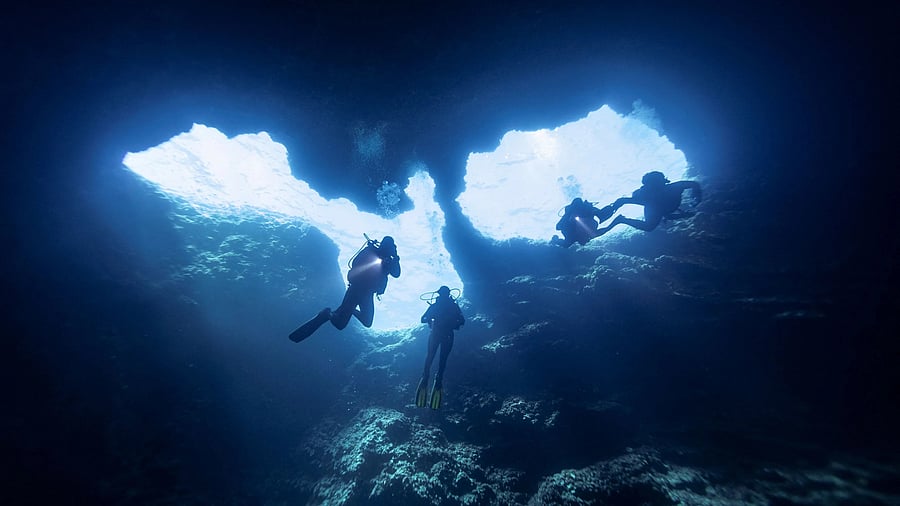
Divers dive deep in sea.
Credit: REUTERS
New Delhi: A year before India’s first deep-sea human submersible goes underwater, two Indian aquanauts have dived to depths of 4,000–5,000 metres in the North Atlantic to gain experience in underwater communication, acoustics, and navigation—skills crucial for operating the indigenous ocean craft Matsya-6000, officials said on Thursday.
With a spherical human capsule named Matsya-6000 that can house three individuals, the indigenous Samudrayaan is likely to plunge to a depth of 500 mt by mid-2026 and to a depth of 6000 mt in the Bay of Bengal by December 2027 to explore the undersea world.
As part of the preparations, two personnel from the National Institute of Ocean Technology (NIOT), Chennai, journeyed to the depths of the Atlantic Ocean in a French vessel earlier this month. One of them, Commander JP Singh (Retd), a former Indian Navy officer, became the first Indian to dive to a depth of 5,000 metres.
“Matsya’s first dive to 500 metres is delayed by about six months as the floating foam for the human capsule is expected from France by November. Matsya’s 6-km plunge is scheduled for December 2027,” M Ravichandran, Secretary, Ministry of Earth Sciences, told DH.
The two NIOT officials took the dive on August 5–6 at Horta, off the Portuguese coast, in the French submersible Nautile. Although discussions between the two countries had been ongoing for two years, the project was kept closely guarded, and the NIOT team received only a week’s notice to undertake the journey.
On August 6, Commander Singh descended to 5,000 metres, spending nearly four hours at the bottom collecting samples with a robotic arm and testing the emergency life-support system. The journey to the seabed took almost 2.5 hours.
A day earlier, NIOT technical staff member R Ramesh had descended to 4,000 metres, spending five hours practising navigation skills and tracking objects.
“In the French vessel, only one person can sit while the other two have to lie on the floor. In the Indian vessel, all three can sit inside the capsule,” Ramesh said.
The two aquanauts, along with senior officials from NIOT and MoES and Union Science Minister Jitendra Singh, addressed a press conference here after returning from France.
“India’s quest for a double conquest—into space and into the deep ocean—has taken off. This marks the beginning of value addition to India’s economic growth story from two sectors that remained relatively under-explored or totally unexplored in the last seven to eight decades,” Singh said.
“We have an Indian going into space and an Indian going into the deep ocean almost simultaneously,” he added.
In another related development, Indian astronaut, Group Captain Shubhanshu Shukla, is likely to reach India by this weekend and meet Prime Minister Narendra Modi to share his experience at the International Space Station. He is also expected to attend the National Space Day celebrations on Aug 23.
